KEEP UP WITH OUR DAILY AND WEEKLY NEWSLETTERS
PRODUCT LIBRARY
a powerful symbol of the house’s cultural heritage, the jockey silk with colorful geometric motifs is an inspiration for leather goods and textiles.
connections: +670
watch our livestream talk with BMW Design at 19:15 CEST on monday 15 april, featuring alice rawsthorn and holger hampf in conversation.
connections: +320
the solo show features five collections, each inspired by a natural and often overlooked occurence, like pond dipping and cloud formations.
discover our guide to milan design week 2024, the week in the calendar where the design world converges on the italian city.
connections: 47
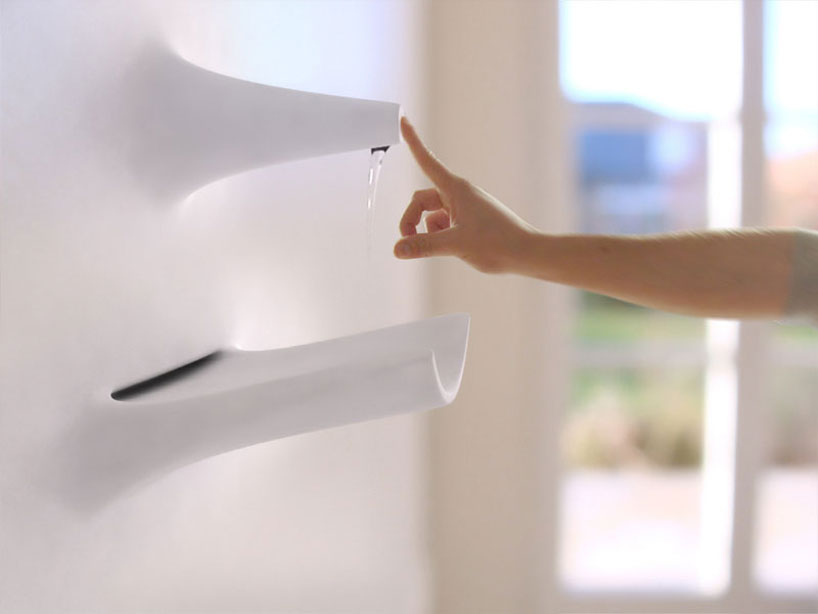
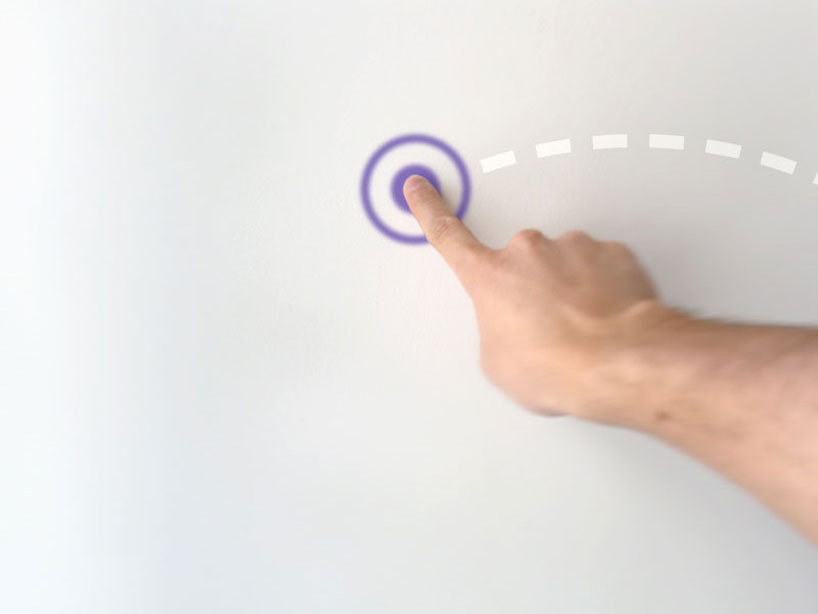 simulation of creating a sink and faucet using claytronics the cursor representing the duo tap / sink can move across the surface of the wall
simulation of creating a sink and faucet using claytronics the cursor representing the duo tap / sink can move across the surface of the wall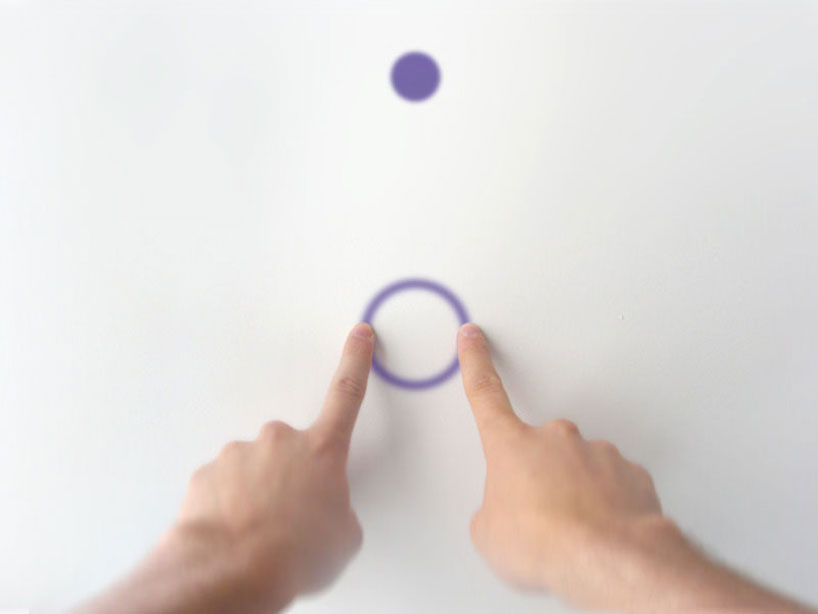 a circle around the point defines the location of the sink from the faucet
a circle around the point defines the location of the sink from the faucet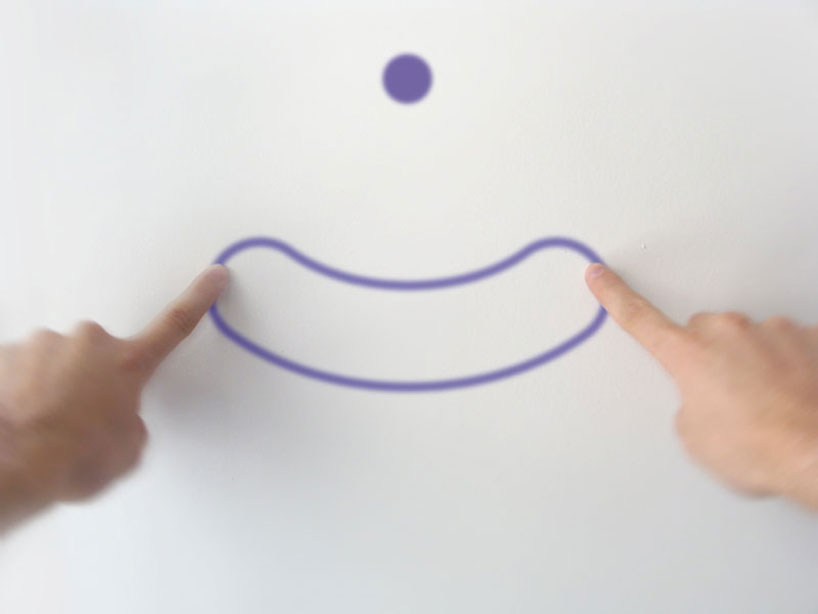 the circle is deformed to indicate the width and curve of the future sink
the circle is deformed to indicate the width and curve of the future sink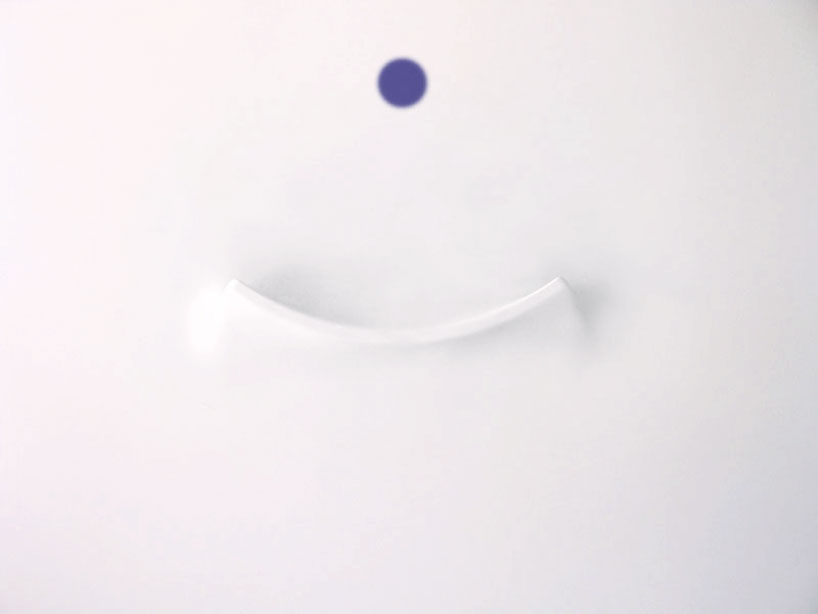 once manipulation is complete, the icon disappears and the shape of the sink begins to emerge
once manipulation is complete, the icon disappears and the shape of the sink begins to emerge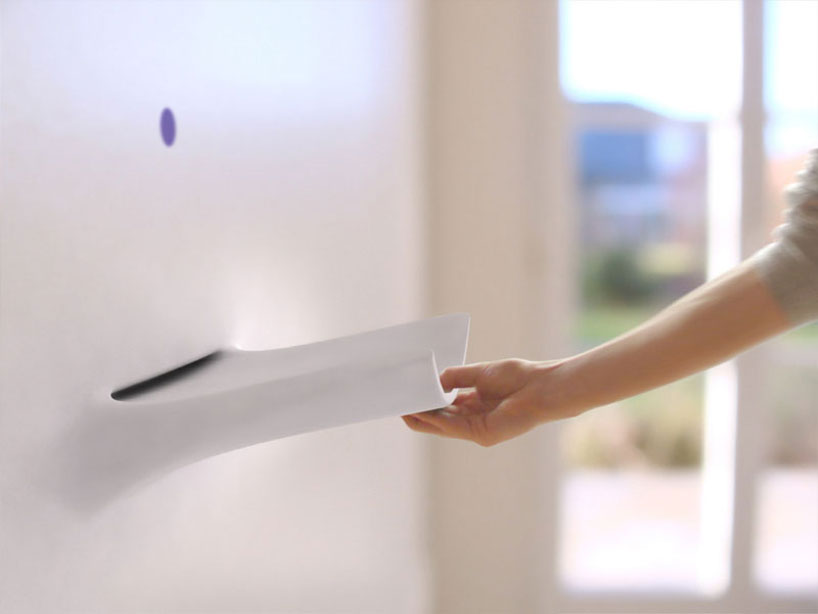 the relief can then be pulled from the wall to one’s desired depth. to make it disappear just push it into the wall.
the relief can then be pulled from the wall to one’s desired depth. to make it disappear just push it into the wall.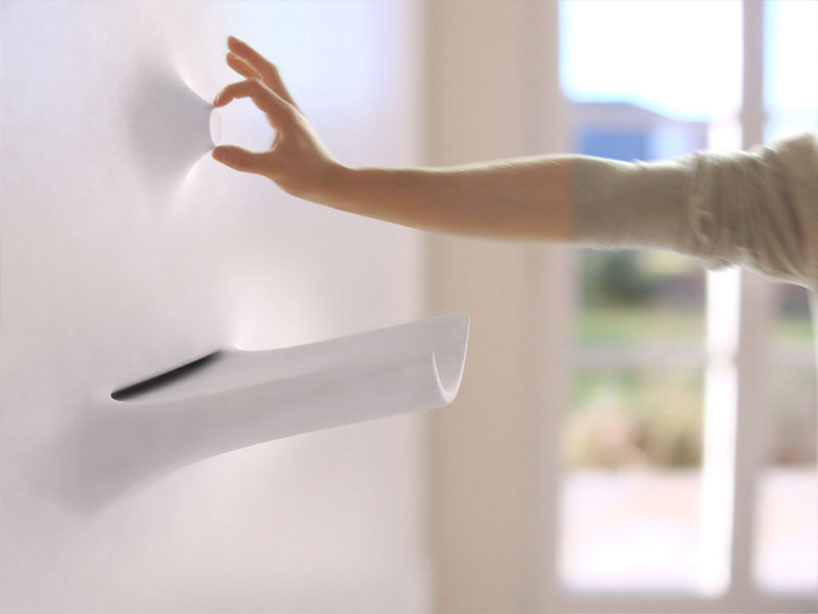 the faucet is made in the same way…
the faucet is made in the same way…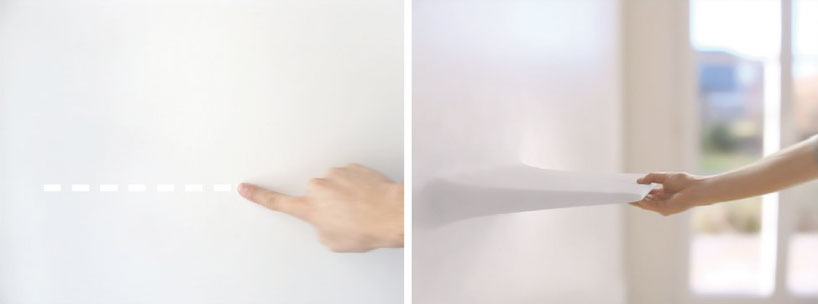 left: drawing a line on the wall is enough to bring out a working plan. right: then you set the depth. width can be changed at any time by stretching the horizontal volume.
left: drawing a line on the wall is enough to bring out a working plan. right: then you set the depth. width can be changed at any time by stretching the horizontal volume.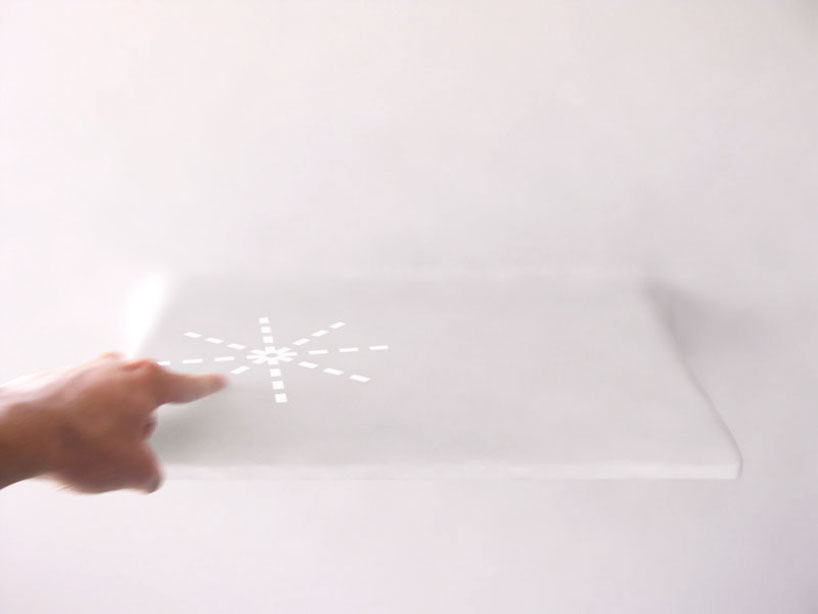 all forms of cutting can be drawn on the plan. they are then recorded and can be invoked at will.
all forms of cutting can be drawn on the plan. they are then recorded and can be invoked at will.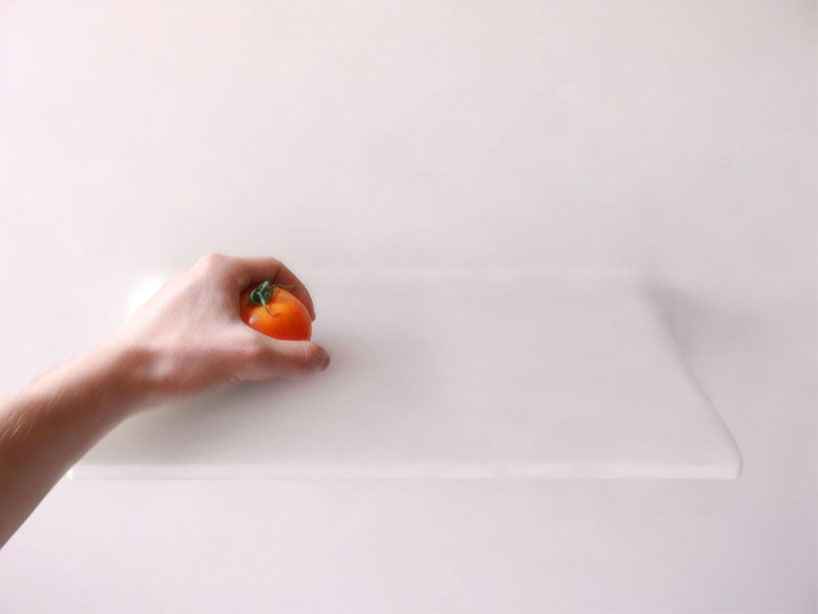 then on can place vegetables on the form, while keeping their hand resting on it.
then on can place vegetables on the form, while keeping their hand resting on it.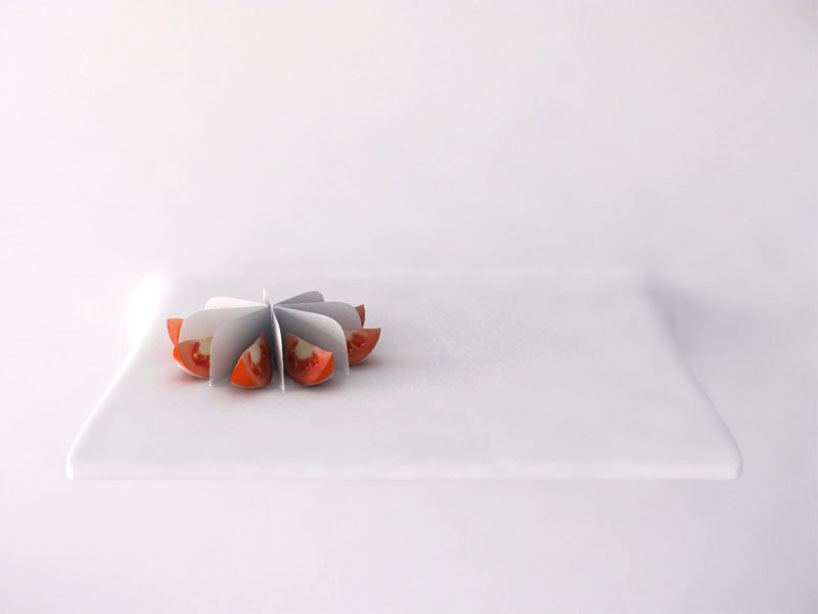 fine strips will then emerge and divide the vegetable. the speed of the blades will decrease gradually with the approach of the hand.
fine strips will then emerge and divide the vegetable. the speed of the blades will decrease gradually with the approach of the hand.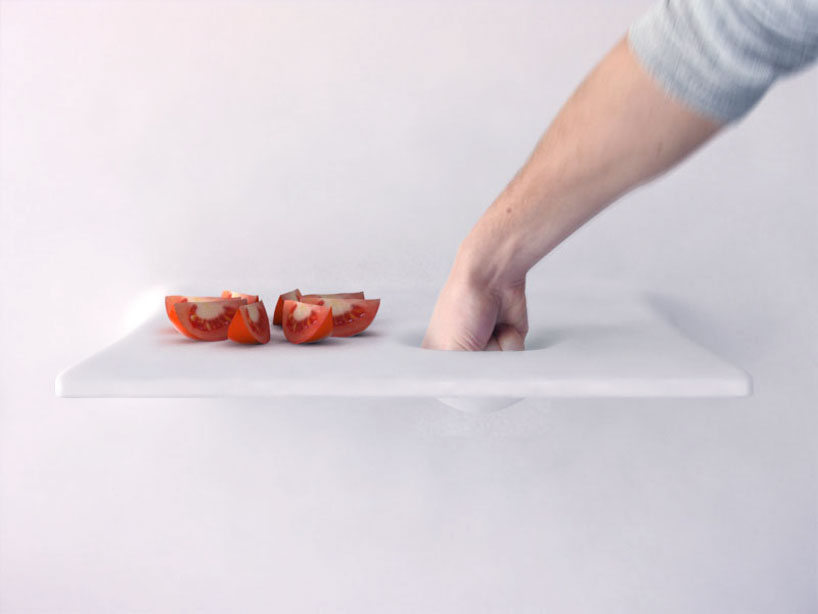 the work plan is malleable and can be distorted by any means for different functions.
the work plan is malleable and can be distorted by any means for different functions.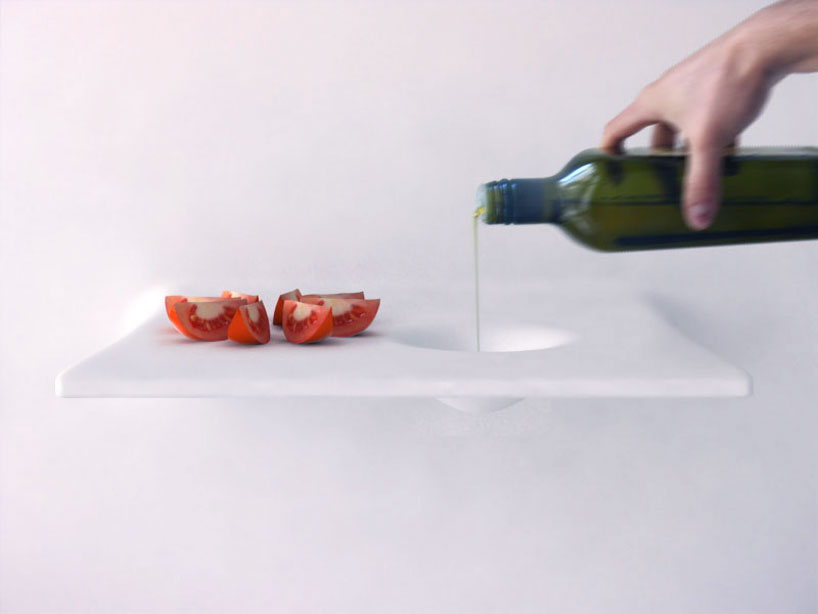 in its first phase, the cavity serves as a container for accompanying sauce / oil. the diameter and depth can be modified by stretching the volume.
in its first phase, the cavity serves as a container for accompanying sauce / oil. the diameter and depth can be modified by stretching the volume.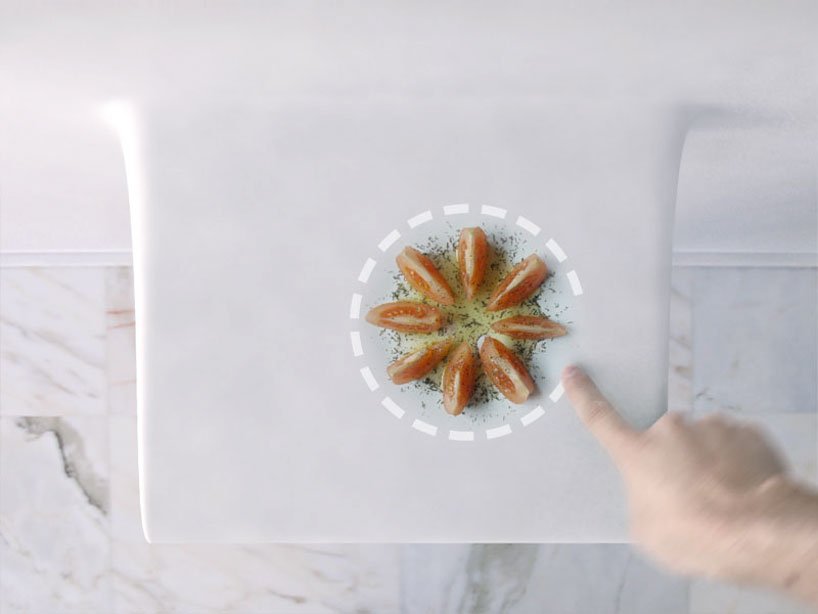 in the second phase, the depth of the container is reduced for serving purposes. the perimeter of the shape is retraced to recover its form.
in the second phase, the depth of the container is reduced for serving purposes. the perimeter of the shape is retraced to recover its form.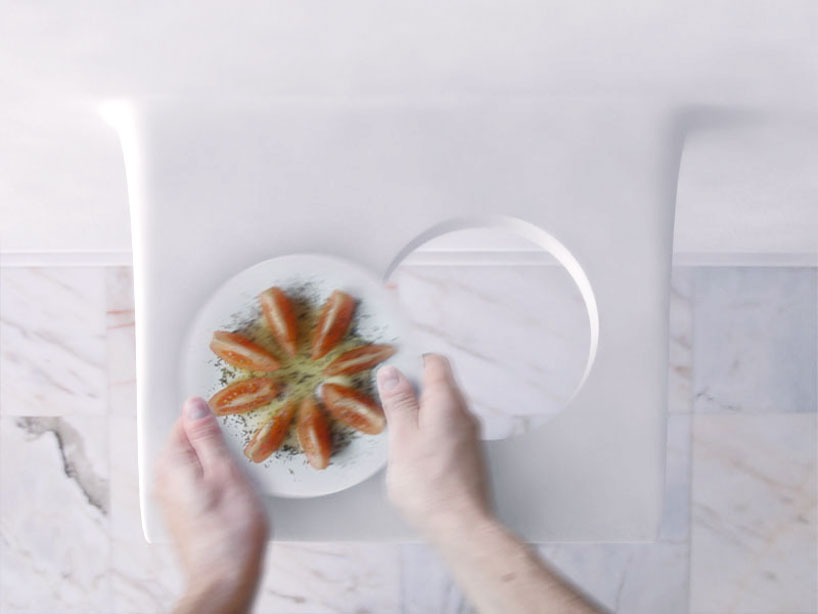 as ‘claytronics’ is a healing material, one will be able to fill holes or merge matter if the plate is replaced in its place.
as ‘claytronics’ is a healing material, one will be able to fill holes or merge matter if the plate is replaced in its place.


